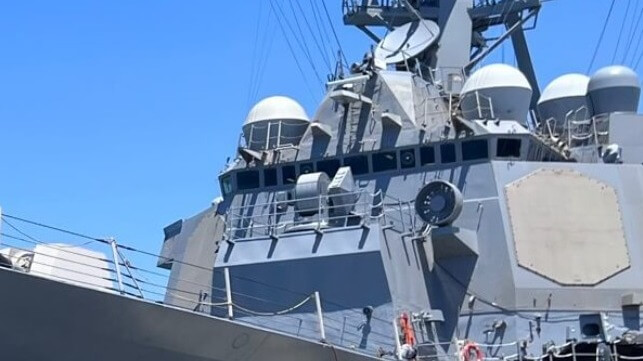U.S. Navy Takes Delivery of First Aegis-Integrated Tactical Laser

The U.S. Navy has taken delivery of its first operational HELIOS (High Energy Laser with Integrated Optical-dazzler and Surveillance) laser system. The Lockheed-designed laser was installed aboard a San Diego-based destroyer earlier this year, and the company describes it as "the first tactical laser weapon system to be integrated into existing ships and provide directed energy capability to the fleet."
The first shipboard HELIOS laser is fitted to USS Preble, an Arleigh Burke Flight IIA destroyer. Lockheed emphasizes that it is integrated with the Preble's Aegis fire-control system, the same platform used to guide and control all of the other weapons systems on board. The laser could be fitted on other large platforms as well, including carriers or large amphibs.
The initial task for HELIOS is to defeat aerial drones and fast-attack craft. The laser's deep magazine, high accuracy and low cost per round make it an ideal technology for destroying small targets. In the future, the Navy and Lockheed hope to field a version that could be used to take out anti-ship cruise missiles as well.
“This is a transformational new weapon system. Laser weapon systems are no longer years away; they’re here now," said Hamid Salim, a VP for advanced weapons systems at Lockheed.

Illustration courtesy Lockheed Martin
HELIOS has an intermediate capacity of about 60 kW of power, reportedly upgradeable to 120 kW. This is in between the low-power ODIN optical dazzler laser fielded by the destroyer USS Stockdale and the powerful 150 kW Laser Weapons System Demonstrator (LWSD) aboard the amphib USS Portland.

that matters most
Get the latest maritime news delivered to your inbox daily.
The U.S. Navy has been experimenting with solid-state lasers at sea for nearly a decade. A lower-power laser, the 30 kw LaWS prototype, reportedly performed well in testing aboard the USS Ponce in 2014-15 but exited service when the vessel was decommissioned.
Faced with increasingly sophisticated near-peer competitors on the high seas, the Navy is ramping up laser weapons testing, including the commissioning of a new R&D facility and test range at Point Mugu, California. A ribbon-cutting ceremony for the new facility was held on December 3, marking the end of a fast-pace two-year construction timeline. Officials described the need for its development as an urgent matter.
